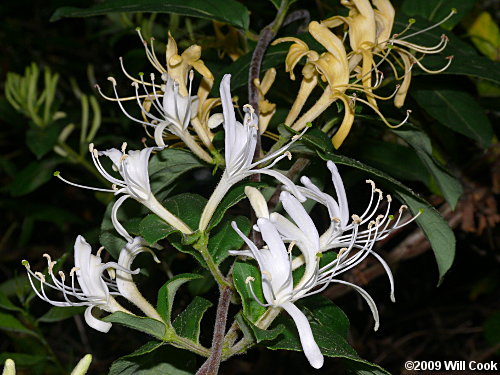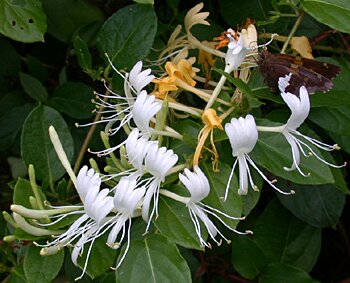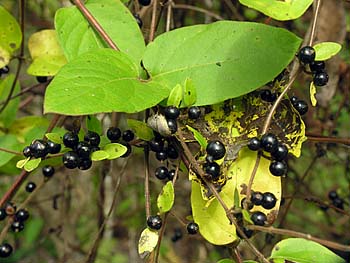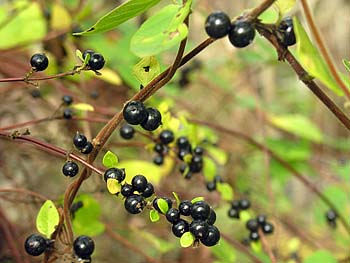
Japanese Honeysuckle is one of our most common and familiar woody vines. The flowers are attractive and very fragrant, but the vine is extremely invasive.
The flowers, which turn from white to yellow as they age, first appear in early May and continue intermittently through fall.
Chapel Hill, NC 5/2/09.







